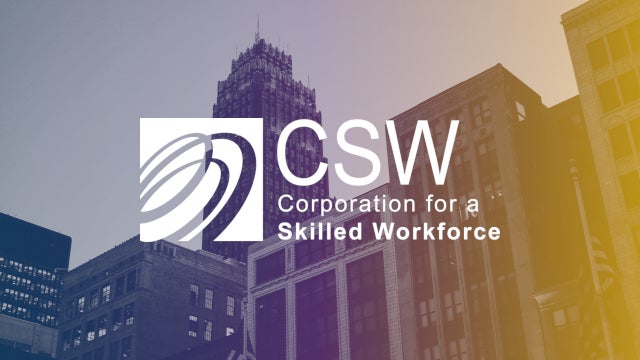Optimax Systems, Inc., based in Ontario, New York, is America’s largest prototype optics manufacturer. Its products are on space vehicles spreading out in the solar system. Pictures from the Mars rover, for example, are taken through Optimax lenses. The company and the cluster of firms in the photonics industry in their region are well positioned for the next remarkable breakthrough in advanced circuit technologies that could make electronics a million times faster. But rather than rest on their accomplishments, Optimax leaders are tackling new frontiers within their company: creating jobs that give employees the chance to succeed.
Mark Popovich, director of the Good Companies/Good Jobs Initiative at the Aspen Institute, caught up with Rick Plympton, Optimax’s energetic CEO, to hear how Optimax stays at the forefront and produces customer success and employee prosperity.
Mark Popovich: Optimax has a strong market position as a technically superior, productive engine. What is the recent performance and near-term outlook?
Rick Plympton: In the last two years Optimax averaged 20 percent annual growth. And we’ll likely grow another 20 percent this year as well. Optimax is not growing at this high rate because the market space is expanding and we’re moving along with it; our market or industry is only expanding about three to five percent per year. Rather, we’re growing because of the things we’re doing internally.
MP: What effect has that growth had on employment levels at Optimax?
RP: We were at 240 employees two years ago. We are right around 300 employees now and growing at about 10 percent annually. The mix is good too. Our average age is around the mid-thirties, and we have a fairly young workforce. Most of the more senior people are also in mentoring roles and helping enable others to move forward.
MP: You are making some key management and cultural changes in a very successful firm. Can you share some of your reasons and insights?
RP: The biggest change is our move toward a “Teal Culture” in the company, the framework created by Frederic Laloux in Reinventing Organizations. For 20 years, Optimax was led by an executive committee of four people. A few years ago, we created a management team that includes about a dozen people. That larger management team now runs the business. We’ve all been working throughout Optimax on team member empowerment and ensuring that all of our employees at all levels share responsibility and authority as well. The net effect is that people make a mental shift from doing what they are told to doing what they believe is right.
That really helps grow the company. Sometimes the growth of a firm is limited by the practical sphere of influence of a few top leaders. Now we’re growing by the sphere of influence of the dozen young professionals on the management team. Those team members are increasing our influence outside with customers and the industry.
At the same time, internally, they’re reaching down into the company to engage everyone in working more efficiently, productively, and creatively. And this is getting results. Today our monthly output is 30 percent higher than it was just a year ago. We’re making huge strides toward development of capabilities to ensure customer success, resulting in booking more work, maintaining a strong brand, and producing more each month.
MP: How does that change the work experience at Optimax?
RP: It isn’t one or two people at the top trying to make all the decisions. People on the floor in production bubble up the ideas that make the whole company more efficient, capable, and productive. With team empowerment, people are more engaged and passionate about the work they are doing. They take ownership of the task. They are actively engaged to make sure things get done.
MP: That’s a great outcome. How do you make a successful transformation?
RP: Mike Mandina, the president of Optimax Systems, Inc., and I have a fundamental belief that most people wake up in the morning and want to go to work and create value. We need to provide the resources, freedom, and training to do just that. And we’ll work together across the company to achieve it. For example, we invest heavily in training. Over the past year, we’ve averaged more than a thousand hours per month in training time. A good deal of that is technical training. But more and more is to support the culture. This is something we’re trying to figure out: How do we coach people to form more effective working groups or communities of practice that solve problems and share information throughout the company?
MP: How are you approaching opportunities to expand your market?
RP: In the past few years, we’ve won contracts to develop freeform optics that require very complex methods and equipment. These optics are used in applications such as virtual reality systems or head-up displays seen in defense or automobiles. New York State has also been awarded funding to support development of integrated photonics. This relates to breakthroughs in circuit development. The next generation electronics will rely on light – photons – rather than electrons moving through circuits. That is a million times faster.
Rochester is positioned to leverage our manufacturing capacity to make equipment and materials for these new generation systems. One third of our business is with companies that make lithography equipment for producing circuits used in our electronics today. They’ll need high precision optics for the equipment to build the next generation of circuits. And we’ll be ready to serve their needs.
At the other end of the market, last year Optimax opened a satellite operation just down the block. It is intended to recapture some of the production of optics that has gone overseas based on low cost. We believe that by working smarter and leveraging technology in a better way that we can bring some of that production back to the US. The new satellite operation has now been operating for over a quarter and is demonstrating it can provide precision optics at a lower cost. This creates new opportunities for our employees, the company, our sector, and the broader region. We are driven by our commitment to producing customer success and prosperity for our employees and the region.
About the author
Mark Popovich serves as director of Good Companies/Good Jobs, an initiative of the Economic Opportunities Program.
Keep in touch
Good Companies/Good Jobs encourages and equips business leaders to enact strategies that simultaneously produce outstanding outcomes for their businesses and their frontline workers. Good Companies/Good Jobs is an initiative of the Economic Opportunities Program.
Learn how the Economic Opportunities Program is helping low- and moderate-income Americans connect to and thrive in a changing economy. Follow us on social media and join our mailing list to stay up-to-date on publications, blog posts, and other announcements.


